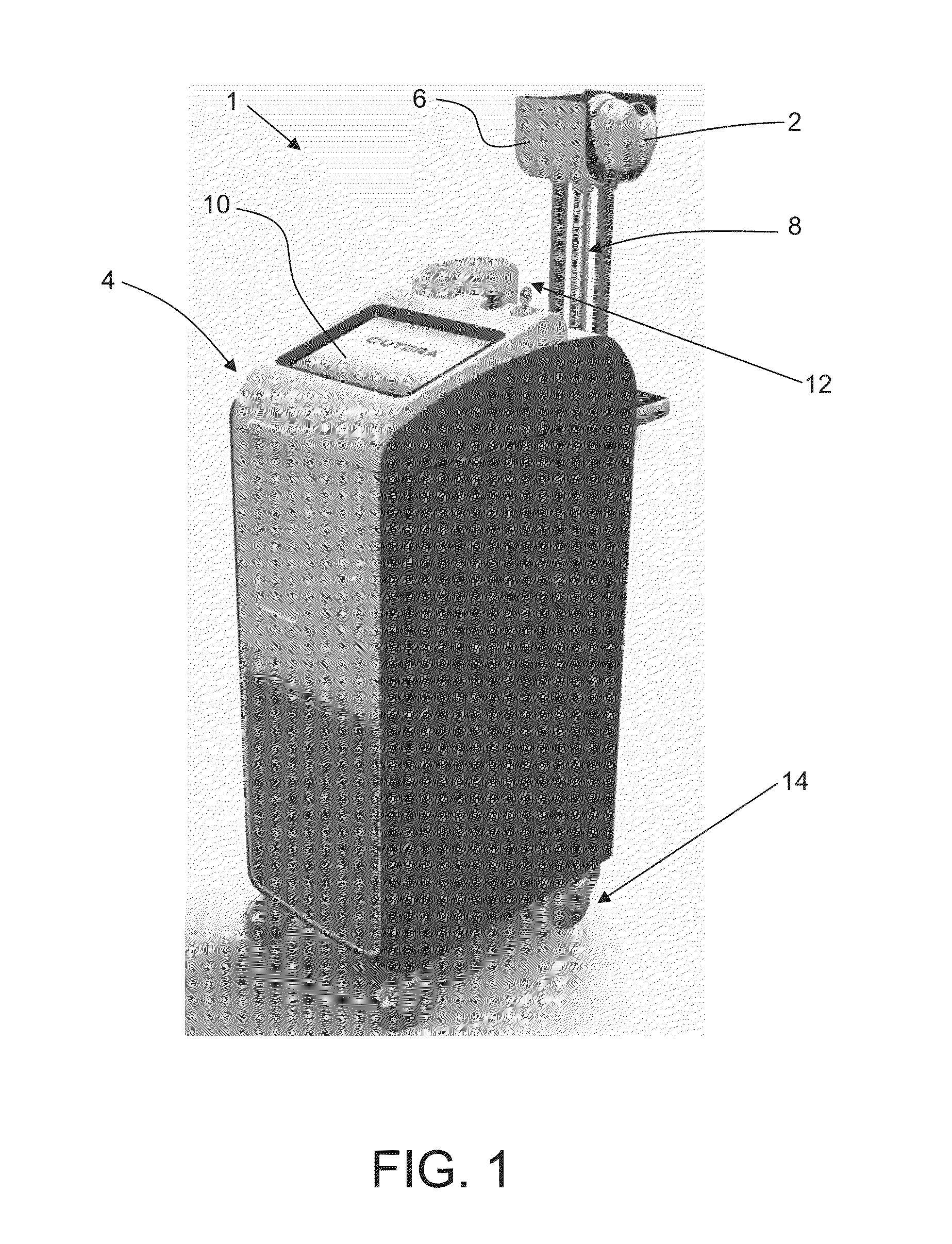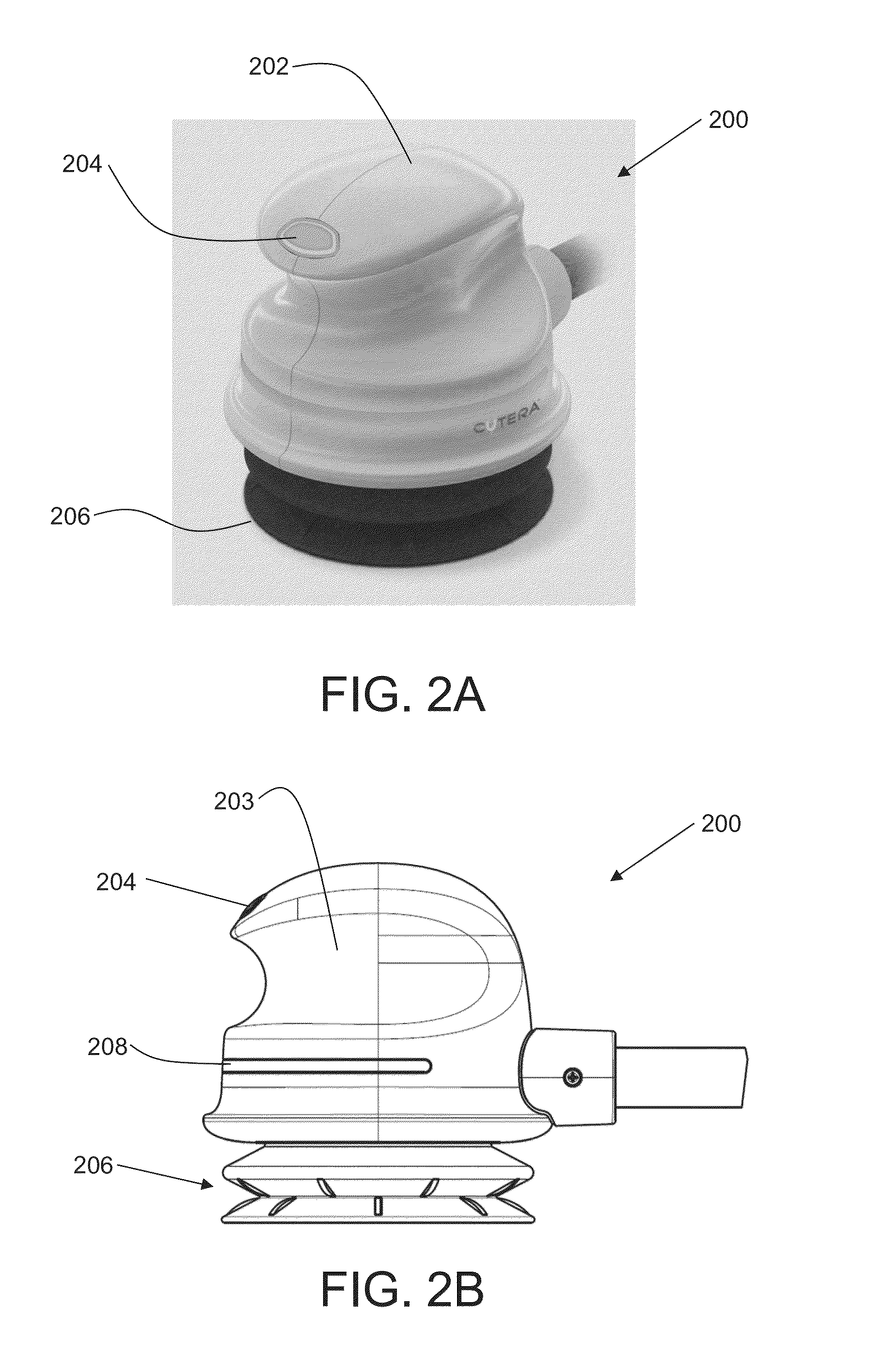Systems and methods for thermolipolysis using RF energy
- Summary
- Abstract
- Description
- Claims
- Application Information
AI Technical Summary
Benefits of technology
Problems solved by technology
Method used
Image
Examples
examples
[0046]FIGS. 6A and 6B are histograms that plot the results of experiments to determine the relationship between temperature and human adipose cell viability. Human adipocyte cells were cultured in six wells, where the cells in each well were exposed to various temperatures ranging from 37° C. to 65° C. for one, two, and three minutes. The percent of adipocyte cells that remained viable 72 hours after heat exposure are reflected in the histogram shown in FIG. 6A. Eighty percent of the adipose cells exposed to temperatures of 50° C. for one minute were no longer viable after 72 hours. Also, 60% of adipocytes exposed to temperatures of 45° C. for 3 minutes were no longer viable after 72 hours, as shown in FIG. 6B.
[0047]Additional experiments and description regarding heating of adipose tissue using an RF applicator with concentric rings may be found in several papers, including “Controlled volumetric heating of subcutaneous adipose tissue using a novel radiofrequency technology” (by W....
PUM
| Property | Measurement | Unit |
|---|---|---|
| Thickness | aaaaa | aaaaa |
| Thickness | aaaaa | aaaaa |
| Thickness | aaaaa | aaaaa |
Abstract
Description
Claims
Application Information
 Login to View More
Login to View More - R&D
- Intellectual Property
- Life Sciences
- Materials
- Tech Scout
- Unparalleled Data Quality
- Higher Quality Content
- 60% Fewer Hallucinations
Browse by: Latest US Patents, China's latest patents, Technical Efficacy Thesaurus, Application Domain, Technology Topic, Popular Technical Reports.
© 2025 PatSnap. All rights reserved.Legal|Privacy policy|Modern Slavery Act Transparency Statement|Sitemap|About US| Contact US: help@patsnap.com



